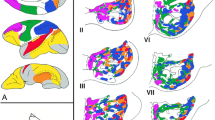Abstract
“Looking into the future” well depicts one of the most significant concepts in cognitive neuroscience: the brain is constantly predicting future events. Such directedness toward the future has been recognized to be relevant to and beneficial for many aspects of information processing in humans, such as perception, motor and cognitive control, decision-making, theory of mind, and other cognitive processes. Because one of the most adaptive characteristics of the brain is to correct errors, the ability to look into the future represents the best chance to avoid repeating errors. Within the structures that constitute the “predictive brain,” the cerebellum has been proposed to have a central function, based on its ability to generate internal models. We suggested that “sequence detection” is the operational mode of the cerebellum in predictive processing. According to this hypothesis, the cerebellum detects and simulates repetitive patterns of temporally or spatially structured events and generates internal models that can be used to make predictions. Consequently, we demonstrate that the cerebellum recognizes serial events as a sequence, detects a sequence violation, and successfully reconstructs the correct sequence of events. Thus, we hypothesize that pattern detection and prediction and processing of anticipation are cerebellum-specific functions within the brain and that the sequence detection hypothesis links the multifarious impairments that are reported in patients with cerebellar damage. We propose that this cerebellar operational mode can advance our understanding of the pathophysiological mechanisms in various clinical conditions, such as schizophrenia and autism.
Similar content being viewed by others
References
Bubic A, von Cramon DY, Schubotz RI. Prediction, cognition and the brain. Front Hum Neurosci. 2010;4:25. doi:10.1002/hbm.21027.
Tesche CD, Karhu JJ. Anticipatory cerebellar responses during somatosensory omission in man. Hum Brain Mapp. 2000;9(3):119–42.
Nixon PD. The role of the cerebellum in preparing responses to predictable sensory events. Cerebellum. 2003;2(2):114–22.
Molinari M, Chiricozzi FR, Clausi S, Tedesco AM, De Lisa M, Leggio MG. Cerebellum and detection of sequences, from perception to cognition. Cerebellum. 2008;7(4):611–5.
Molinari M, Restuccia D, Leggio MG. State estimation, response prediction, and cerebellar sensory processing for behavioral control. Cerebellum. 2009;8(3):399–402.
Ebner TJ, Pasalar S. Cerebellum predicts the future motor state. Cerebellum. 2008;7(4):583–8.
Ito M. Control of mental activities by internal models in the cerebellum. Nat Rev Neurosci. 2008;9:304–13.
Spencer RMC, Ivry RB. Cerebellum and timing. In: Manto M, Gruol D, Schmahmann J, Koibuchi N, Rossi F, editors. Handbook of the cerebellum and cerebellar disorders. New York: Springer; 2013. p. 1201–19.
Schmahmann JD. Disorders of the cerebellum: ataxia, dysmetria of thought, and the cerebellar cognitive affective syndrome. J Neuropsychiatry Clin Neurosci. 2004;16:367–78.
Bower JM, Parsons LM. Rethinking the “lesser brain”. Sci Am. 2003;289(2):50–7.
Koziol LF, Budding D, Andreasen N, D’Arrigo S, Bulgheroni S, Imamizu H, et al. Consensus paper: the cerebellum’s role in movement and cognition. Cerebellum. 2014;13(1):151–77.
Restuccia D, Della Marca G, Valeriani M, Leggio MG, Molinari M. Cerebellar damage impairs detection of somatosensory input changes. A somatosensory mismatch-negativity study. Brain. 2007;130:276–87.
Leggio MG, Chiricozzi FR, Clausi S, Tedesco AM, Molinari M. The neuropsychological profile of cerebellar damage: the sequencing hypothesis. Cortex. 2011;47(1):137–44.
Braitenberg V, Heck D, Sultan F. The detection and generation of sequences as a key to cerebellar function: experiments and theory. Behav Brain Sci. 1997;20:229–77.
Molinari M, Petrosini L. Is sequence in/sequence out a cerebellar mode of operation in cognition too? Behav Brain Sci. 1997;20:259–60.
Ivry R. Exploring the role of the cerebellum in sensory anticipation and timing: commentary on Tesche and Karhu. Hum Brain Mapp. 2000;9(3):115–8.
Bubic A, von Cramon DY, Jacobsen T, Schröger E, Schubotz RI. Violation of expectation: neural correlates reflect bases of prediction. J Cogn Neurosci. 2008;21(1):155–68.
Molinari M, Leggio MG, Solida A, Ciorra R, Misciagna S, Silveri MC, et al. Cerebellum and procedural learning: evidence from focal cerebellar lesions. Brain. 1997;120:1753–62.
Leggio MG, Tedesco AM, Chiricozzi FR, Clausi S, Orsini A, Molinari M. Cognitive sequencing impairment in patients with focal or atrophic cerebellar damage. Brain. 2008;131:1332–43.
Acknowledgments
The editing support of Blue Pencil Science is acknowledged.
Conflict of Interest
The authors have no conflict of interest to declare.
Author information
Authors and Affiliations
Corresponding author
Rights and permissions
About this article
Cite this article
Leggio, M., Molinari, M. Cerebellar Sequencing: a Trick for Predicting the Future. Cerebellum 14, 35–38 (2015). https://doi.org/10.1007/s12311-014-0616-x
Published:
Issue Date:
DOI: https://doi.org/10.1007/s12311-014-0616-x




